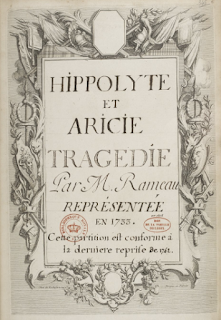Henri Rabaud - Mârouf, savetier du Caire
Opéra Comique, Paris, Monday May 27 2013
Conductor: Alain Altinoglu. Production: Jérôme Deschamps. Choreography: Peeping Tom (Franck Chartier). Sets: Olivia Fercioni. Costumes: Vanessa Sannino. Lighting: Marie-Christine Soma. Mârouf: Jean-Sébastien Bou. Princesse Saamcheddine: Nathalie Manfrino. Le Sultan: Nicolas Courjal. Le Vizir: Franck Leguérinel. Ali: Frédéric Goncalvès. Fattoumah: Doris Lamprecht. Le Fellah ; premier marchand: Christophe Mortagne. Ahmad: Luc Berthin-Hugault. Second marchand ; premier mamelouk: Geoffroy Buffière. Le Kâdi: Olivier Déjean. Chef des marins ; ânier ; premier muezzin ; premier homme de police: Patrick Kabongo Mubenga. Second homme de police: Ronan Debois. Second muezzin: Safir Behloul. Accentus choir. Orchestre Philharmonique de Radio France.
Is there some unbridgeable kind of divide between French and “Anglo-Saxon” theatrical tastes? I really don’t enjoy Jérôme Deschamps “amateur theatricals” approach to stage directing, but my French friends do. I see that the FT’s mostly unhappy review of Mârouf is countered by numerous happy French ones. I’m on the FT’s side: “Visually the production would be a trial in some provincial backwater; in Paris it is unacceptable.” I might have been less categorical about it, but the thought certainly crossed my mind. The FT refers wistfully to the “simple poetry and good taste” of a 2000 production in Marseille. I don’t usually yearn for either poetry or good taste; but I did sit there wishing the production had gone more for the potential magic of a good-humoured oriental tale (Mârouf is taken from the 1,001 Nights) and less for goofing around farcically in a PC-free zone, making fun of Orientals. I think Deschamps’ productions are meant to be an affectionate, nostalgic nod to an imagined golden age of vaudeville; to me they look amateurish and threadbare.
The sets for Mârouf showed every sign of being built on a tight budget: some flimsy Wendy houses – white, then yellow - with rectangular openings, a tacky, oriental-inspired interior with a pool (70s-looking), a painted backdrop showing the Sphinx at night, with a paper moon, bobbing, stuffed camels’ heads for the long-awaited caravan and pumped-up Mameluks on hobby-horses. The costumes were frequently-déjà-vu send-ups of Ottoman dress, with huge, ballooning turbans - some bearing “attributes” such as a fox’s head for the wily Vizir or scales for the Kâdi judge (or a gigantic red toffee apple on the confectioner’s shoulder) - bold geometric prints and gaudy colours (“complicated, garish and generally rather hideous,” said the FT). The exceptions, to me, were the cute donkeys: not traditional, pantomime ones, but sleek dancers got up in matt grey and beige fuzz, with nodding donkeys’ heads. The ballerinas were sea-green to match the Mameluks; their choreography was a kind of St Vitus dance: incomprehensible, bordering on risible. The acting, as usual with Deschamps, was sheer hamming – and having the Muslims all shuffle one way or another en bloc in their outlandish headgear was more, somehow embarrassing, déjà-vu.
 |
| Rabaud |
Around them, quite a lot of the singing was, whether loud or not, what you might call uncouth or rough-edged; but in character roles, which all of them are, especially in this kind of production, you could more or less put up with it. Doris Lamprecht sledgehammered her way surprisingly through the part with a vibrato a mile wide, but perhaps that’s alright for a "calamitous" harridan. Nathalie Manfrino was not alright as a princess (“simply common” snapped the FT) and you wondered how someone apparently so young could have a voice already so hard and out of control: fortunately the part didn’t make too frequent demands on her dodgy notes. Franck Leguérinel seemed on relatively pale form.
But alongside Jean-Sébastien Bou, the real heroes of the evening were in the pit: Altinoglu, the (in this context, luxurious) Radio France orchestra, and Rabaud’s scintillating score - a sophisticated French score, unmistakeably of its time and place. It's a Ballets Russes kind of piece, rolling out a continuous, tightly-woven symphonic carpet under the voices, somewhere between Rimsky Korsakov and – if you can imagine such a thing – a Gallic Zemlinsky, with periodic hints of Ravel and even Debussy. The orientalism is fairly carefully dosed, not OTT like Saint-Saëns’. Mârouf is not an operetta, not at all (interestingly, the first Mârouf at the Opéra Comique, 99 years ago, was the first Pelléas, Jean Périer), hence the clash between the trivial staging and the far-from-trivial music, crafted for a fairy tale, not a farce. The playing was perfection: beautifully clear, beautifully balanced, beautifully nuanced.
I must see if a recording exists with such a good orchestra in top-quality sound: Mârouf is definitely worth getting to know better.
Meanwhile here's Boué Geori as Princesse Saamcheddine in 1948.




Comments
Post a Comment